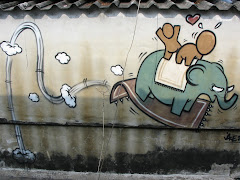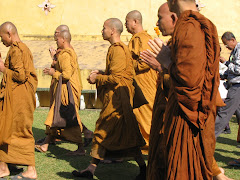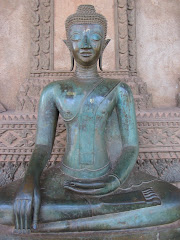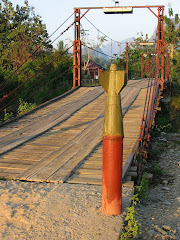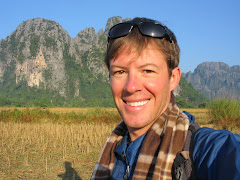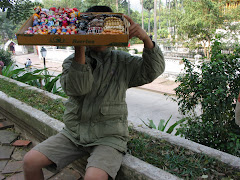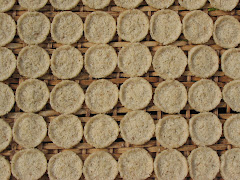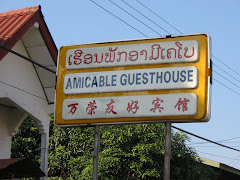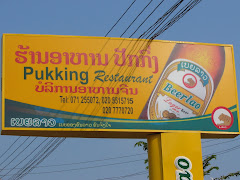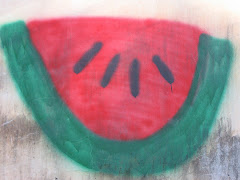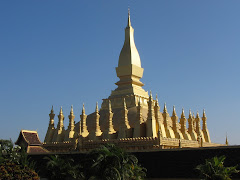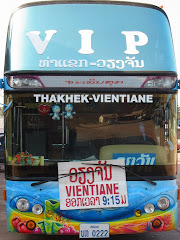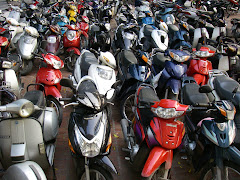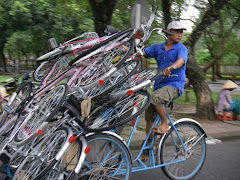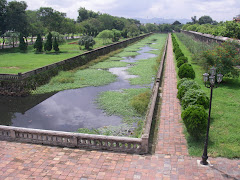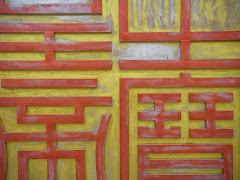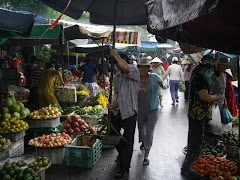
Luang Prabang's morning market is located just down the alley from my guesthouse and I had wandered through it a half dozen times before I actually started noticing how many different things were being sold. Thinking it might be interesting to list everything I saw (and could identify - not easy in Laos), I grabbed a pen, a scrap of paper, and started strolling. The market isn't all that big by Asian standards, just a hundred meters long or so and taking up both sides of a narrow street, but I was surprised by the variety. Dog lovers beware - this may not be your kind of place. Anyway, here's what I found, in no particular order: Plantains (roasted and raw), wrapped bundles of banana leaves, onions (yellow and green), eggs,
khai paen (dried Mekong river moss fried with sesame seeds), smoked whole chickens, bullfrogs (dead or still hopping), coconuts, water melons, green beans, a half dozen varieties of tubers, guords, snails, eggplants, tomatos, lettuce, cabbage, oranges, garlic, at least a dozen types of rice, M

ekong catfish (some the size of my thigh), carrots, kale, cabbage, buckets of fishheads, fish stew, fishhead stew, chili peppers, (red or green), pinapples, marigolds, apples, mint, cauliflower, cucumbers, roasted ducks, raw ducks, live ducks, papaya, bundles of firewood, dried squid, wet Mekong river moss, fresh baked baguettes, river crabs on wicker stringers, charred rodents (mice? rats?), tofu, potatos, broccoli, river eel, crickets, larvae of some type, sausages (of unknown origin), barnacles, mushrooms, live chickens (roosters and hens), entire buffalo ears (freshly chopped), a huge water buffalo tail (once again, freshly chopped), ginger root, chili powder, rice noodles, peanuts, sun-dried rice cakes, dragon fruit, mangos,
phak nam (a local variety of watercress), piles and piles of chopped and bloody meat, and yes, one entire, partially bloated, completely skinned, dog (Labrador-size). Woof, woof......yum.
 Perhaps travel cannot prevent bigotry, but by demonstrating that all people cry, laugh, eat, worry, and die, it can introduce the idea that if we try and understand eachother, we may even become friends - Maya Angelou
Perhaps travel cannot prevent bigotry, but by demonstrating that all people cry, laugh, eat, worry, and die, it can introduce the idea that if we try and understand eachother, we may even become friends - Maya Angelou


















































